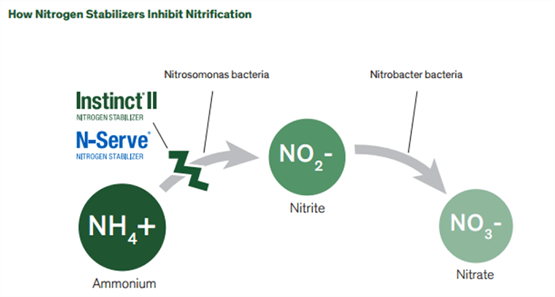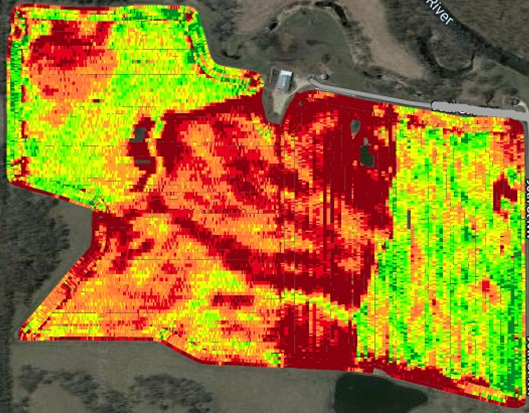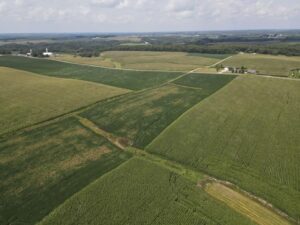
From the Week of October 16, 2023
The one-stop-shop for everything you need to know about what’s happening this week in your fields.
This week’s featured agronomists are:
Jake Heitshusen – Le Sueur
Hannah Hernke – Goodhue
Chad Wiersma – Morristown
Joel Johanningmeier – Stewartville
Eric Soley – Ellsworth
Scroll down to hear from your local agronomist!
WEST
Belle Plaine – Le Center – Le Sueur

Jake Heitshusen
Here in Le Sueur, we finally got some much-needed rain the past few days; albeit a little late for this year’s crop. However, it is replenishing the sub soil which will help for next year’s crop and surely save on some fixing for tillage and NH3 applications for this fall. Soil temperatures are now at or below 50 degrees meaning we can start applying NH3 without the worry that it will be lost to leaching this fall. The use of N-Serve is also a widely recommended practice to help keep the nitrogen in the root zone until we need it next summer. It does this by killing the Nitrosomonas bacteria that convert the NH4+ to NO2– and NO3-. All three forms are available to the plant to use but since the NH4 is positively charged it sticks to the negatively charged soil particles and does not leach down the profile. Have a safe fall and enjoy the weather before the snow flies!

EAST
Pine Island – Cannon Falls – Goodhue – Lake City
Everyone across the territory has been plugging away in the field. Yields being reported are across the board. I believe the consensus is that everyone is pleasantly surprised at how things are yielding considering how the crop looked 6 weeks ago. In the southern part of our region, soil temperatures have continued to trend downward – meaning, time to apply fall anhydrous! We want to apply anhydrous when soil temperatures remain under 50 degrees, this is to delay the conversion of ammonium nitrate and reduce leaching from rainfall events. We are getting into the heart of harvest; I hope everyone stays healthy and safe in the coming weeks!

CENTRAL
Morristown – Wanamingo – Kenyon

Chad Wiersma
It’s that time of the year again, report cards are coming in and everyone is eager to see how we did. Funny to think how much effort we have put into this crop. We started in some cases over a year ago fertilizing and planning for the 2023 crop. We are currently fertilizing and planning for the 2024 crop, before we even get our final report card. That is the beauty and challenge of a biological production cycle. As many of you know, we have been seeing yields all over the place. I’ve heard soybeans from 5 to 75, and corn from 60-260. Rainfall seemed to be the biggest influencer in yield this year. Some areas received a couple extra inch or two and it is showing up in the grain tank big time. I’m amazed by how much more yield came from 1-2 inches of rain. Many areas would have seen a 10-20% increase in yield with just a couple more inches of rain; I guess farming is the new “game of inches”. Of course, at the end of the day we are always subject to the weather. While we have no control over the weather, we still have control over some things that really are standing out this year- Potash, Potash, Nitrogen, Hybrid, and Fungicide. I know we harp on it a lot, but once again we are seeing big responses in these inputs. While we can’t always predict what hybrids will hit, we can control fertility and fungicide. I look at a lot of data, but I have been surprised again this fall how much more yield we are seeing with high K soil levels. The ability to yield through the stress with high fertility is really impressive. It can be disheartening to have the weather take top end yield off, but don’t be dismayed, there are things we can still do to influence yield. Keep managing your inputs, to get what you want on output. I hope the rest of harvest is a fun and safe time with your families!
SOUTH
Elgin – Lewiston – Stewartville
 Joel Johanningmeier
Joel Johanningmeier
Evaluating Seed Choices
As soybean harvest is finishing up and corn harvest is moving along rapidly in the area, seed selection for next season is coming into focus. Given the growing environment of the 2023 season, I would caution against simply listing your hybrids or varieties from top to bottom in yield and selecting based off this year’s performance. After getting yield results in this year, as you can imagine, performance of a hybrid/variety is all over the board. Some good varieties didn’t do well in certain fields and vice versa where others that you didn’t have expectations, did well in other fields. To avoid making a mistake in selection for next season, dive into the details of field performance.
Some of the performance can be explained by amount of rainfall or soil type, but in many cases there is some other interaction that needs to be taken into account. In some cases you may have to take into account soil test or fertilizer application to help determine how a hybrid/variety performed. If you recall, back around the end of June where we were seeing potassium deficiencies in many fields due to lack of available K in the root zone. It could also be the rate and timing of nitrogen or a planting date that impacted it most. Thinking back to early Spring, fields in the area planted on May 5th and even some on the 4th struggled with emergence. Lack of population has a direct impact on yield potential.
These are just a few of the more prevalent impacts from the season, but it could be any number of things as our crops are grown in a biological system. I encourage you, as you evaluate your seed performance this year, to have an in-depth discussion with your agronomist and/or AYS Specialist to dig into the details of why a hybrid or variety responded to the 2023 season the way it did. Review yield maps to understand performance in zones in the field. While we will not likely make wholesale changes to our management of a field, 2023 maps may give us insight into those outlier years. In the example map below we saw more defined zones than what we have been able to see in the past. This will help us with our decision making for future seasons.
Understanding why a hybrid/variety performed with the management and environment that it did can help fine tune your seed placement for next year. Having a plan in place before planting helps to get the most out or your fields.
Pictured below is a yield map that is showing some of the dramatic yield differences being seen across fields this Fall. This particular field is showing some veins & historically well yielding parts of the field yielding poorly in 2023. We are currently diving into data to draw final conclusions, however soil types and rainfall are major factors.

WISCONSIN
Ellsworth
 Eric Soley
Eric Soley
Harvest time is a great time to reflect on the year we had. When we began corn silage in August, a common theme was “well, yields are pretty good considering the lack of rain.” Now that we are well into combining corn, a lot of farmers are seeing record yields on their farm. Once again, we are realizing that the timing of the rain is more important than the quantity. Though the lack of rain might have taken a toll on the farmers/agronomists mental state, the corn handled it much better.
Soybean yields have been much better than anticipated as well, especially with the dry second half of August that we had. White mold was one of the biggest yield robbers for soybeans in our area. For fields that have a history of white mold, dropping populations and selecting defensive varieties with good SWM tolerance is often not enough. For these fields another defense treatment is often needed. Applying a fungicide, such as Miravis Neo, can help manage the risk of white mold but to be most effective it seems that applications at R1 and R3 need to be made. Another option that we have had success with in western Wisconsin is a product called Contans. Contans is a preventative fungicide that is soil applied that rids your soil of the sclerotia that white mold leaves behind. It’s not a one-year fix, often time it takes three years of treatment on those fields to get ahead of the white mold. Neither of these fungicide options are “cheap” but some perspective needs to be taken on how much white mold is costing the farmer. This year 20-25 bushels/ac is the loss we are seeing from severe white mold. With $12 soybeans that is a loss of $240 per acre. Sometimes the questions needs to be, “what is it costing me if I don’t do anything about it.”
Pictured below are aerial views of white mold from this summer.
 |
 |



